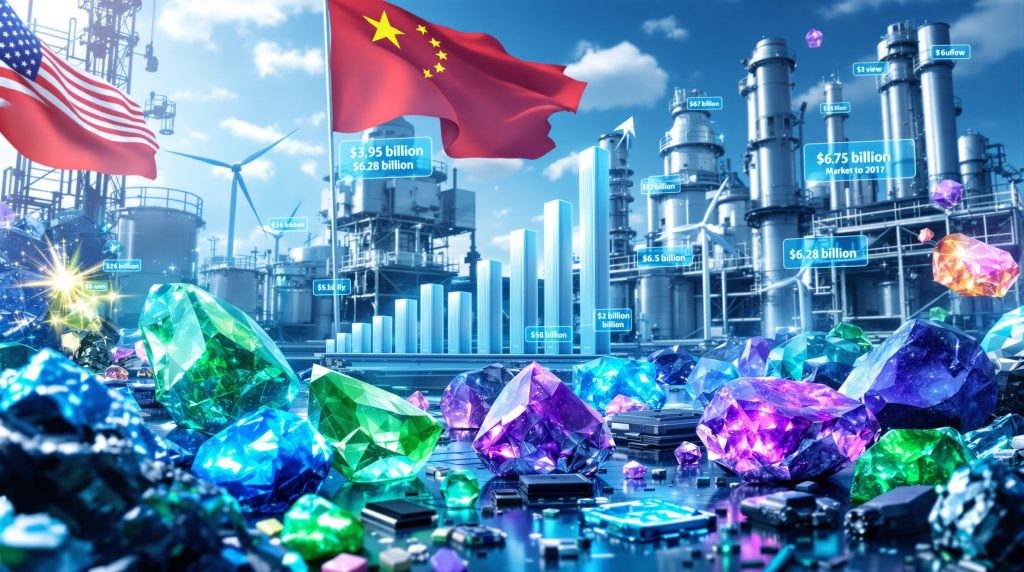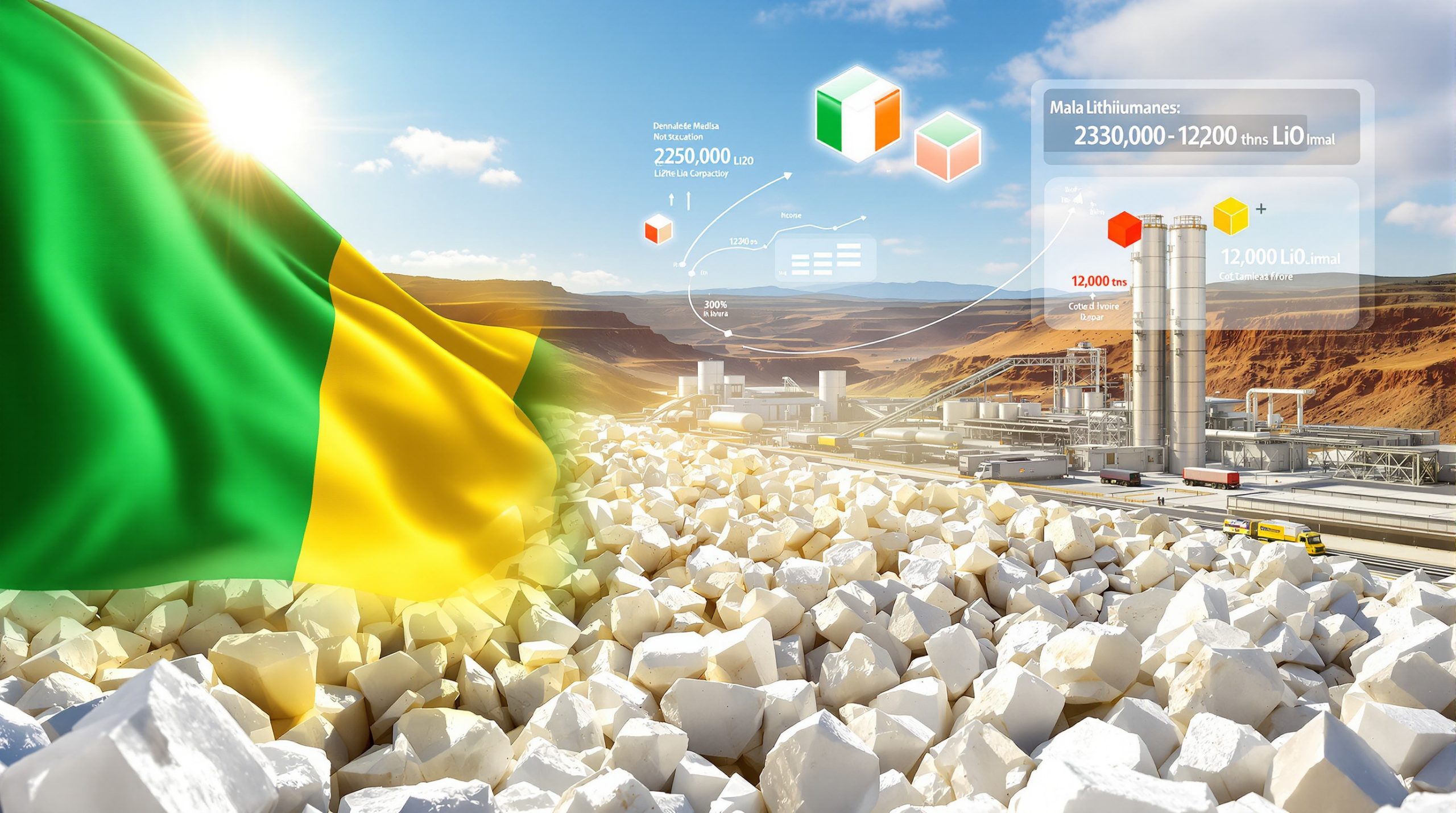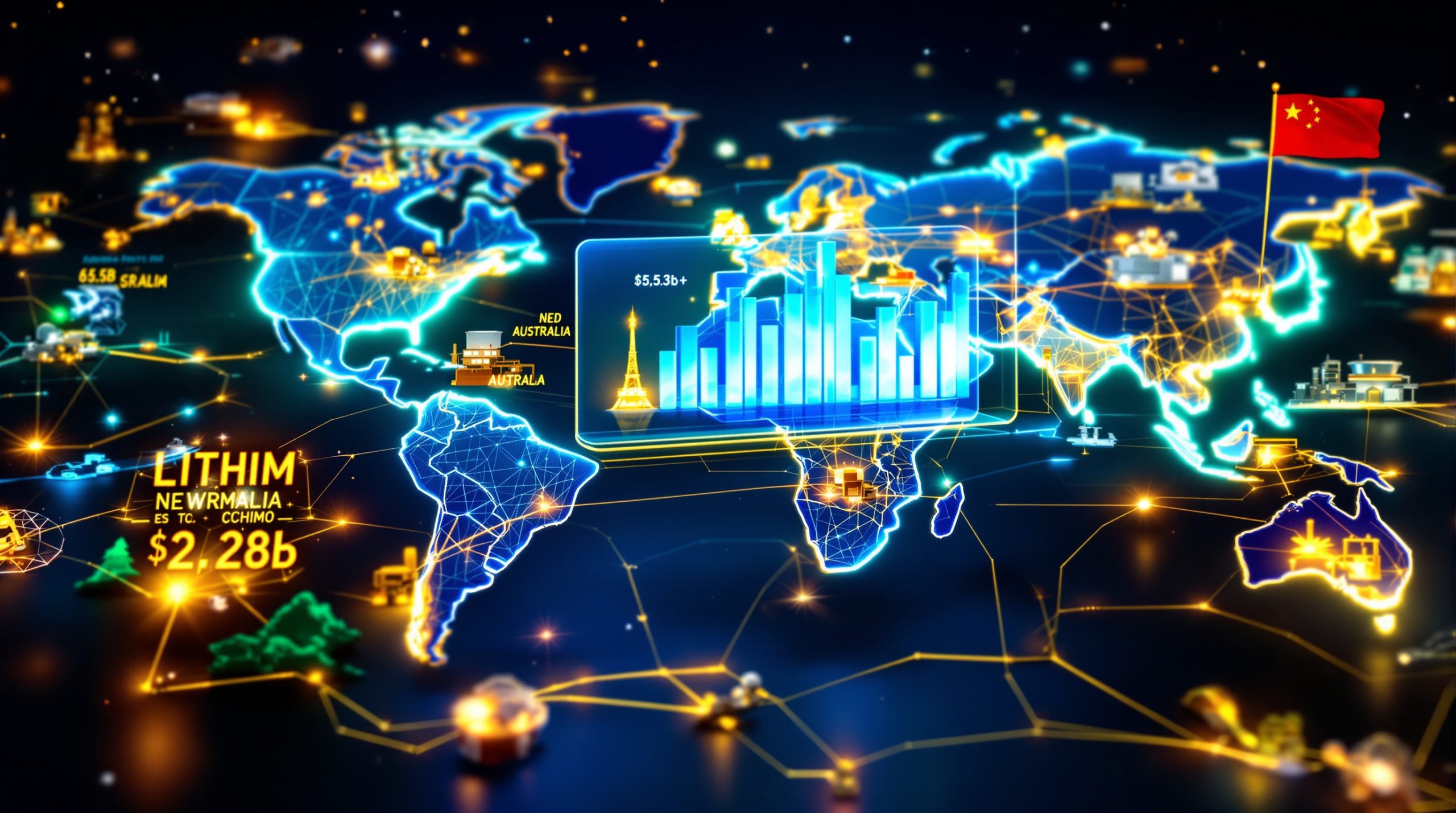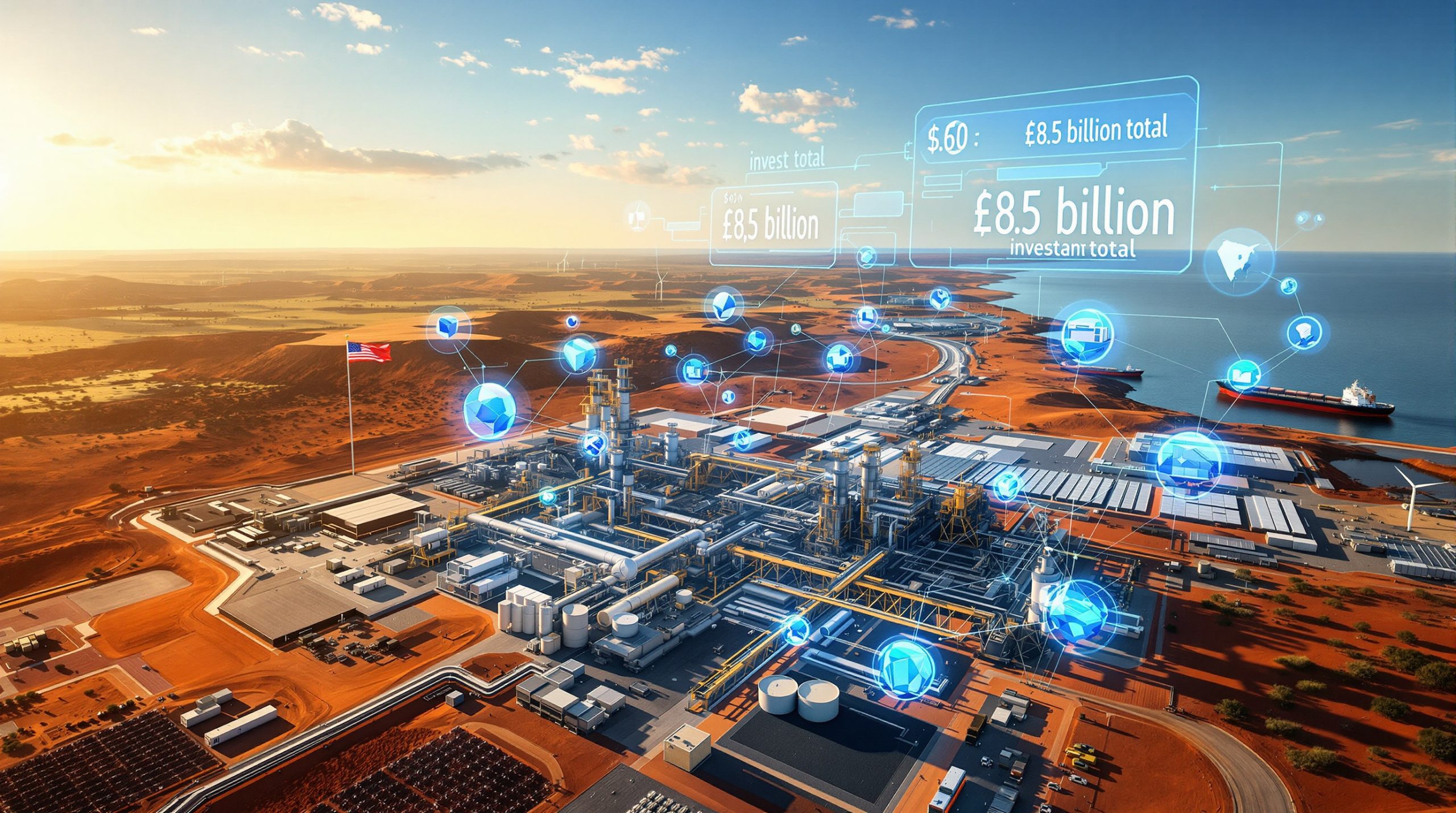What's Driving the Current Rare Earth Boom?
The global rare earth elements market is experiencing unprecedented expansion, driven by structural demand changes rather than speculative trading. Market projections indicate the sector will grow from $8.9 billion in 2024 to $16.8 billion by 2032, representing a compound annual growth rate of 8.3% (Fortune Business Insights, "Rare Earth Elements Market Size, Share & Industry Analysis," 2024).
This rare earth boom reflects more than statistical growth—it signals fundamental shifts in technological infrastructure, defence priorities, and energy systems worldwide. Unlike historical commodity cycles characterised by price volatility and speculation, current demand patterns demonstrate structural integration of rare earth elements into essential technologies.
Furthermore, the critical minerals energy transition has positioned rare earth elements as cornerstone materials for global decarbonisation efforts. This transformation creates sustained demand that transcends traditional commodity cycles.
Understanding the Scale of Demand Growth
Magnetic rare earth element consumption is projected to nearly triple, expanding from approximately 46,000 metric tons in 2023 to potentially 138,000 metric tons by 2035 (Benchmark Mineral Intelligence, "Rare Earth Market Outlook," Q3 2024). This explosive growth trajectory stems from technological transformation across multiple sectors where rare earth elements provide irreplaceable performance characteristics.
Primary Growth Catalysts:
• Electric vehicle traction motors requiring 1-3 kg of neodymium-praseodymium magnets per vehicle
• Wind turbine generators demanding 600-1,000 kg of rare earth magnets per megawatt of capacity
• Defence systems integration spanning precision-guided weapons to radar technologies
• Consumer electronics miniaturisation requiring high-efficiency components
• Grid modernisation infrastructure incorporating rare earth-based transformers and motors
The U.S. Department of Energy has confirmed that rare earth permanent magnets are essential to clean energy technologies and have no substitutes for many applications requiring high energy density and high-temperature performance (U.S. Department of Energy, "Critical Materials Strategy," December 2023).
How Are Geopolitical Tensions Reshaping the Rare Earth Landscape?
China's dominance in rare earth processing creates strategic chokepoints that Western governments increasingly view as unacceptable vulnerabilities. Chinese facilities process approximately 87-90% of global rare earth elements despite mining only 60-70% of raw materials worldwide (U.S. Geological Survey, "Mineral Commodity Summaries 2024," January 2024).
Recent export restrictions have accelerated Western diversification efforts. China implemented new export controls on rare earth processing technology in December 2023, requiring licences for magnet manufacturing equipment exports (Ministry of Commerce of China, "Export Control List Update," December 15, 2023). These measures followed earlier restrictions on gallium and germanium in July 2023, and graphite export controls in October 2023.
Consequently, the Trump executive order on minerals has further emphasised the urgency of domestic supply chain development. Moreover, Greenland's critical minerals have gained strategic importance as Western nations seek alternative sources.
Strategic Response from Allied Nations
Government investment in alternative supply chains reflects unprecedented coordination between commercial and security objectives. The U.S. Department of Defense allocated $285 million through Title III of the Defense Production Act for rare earth supply chain development in fiscal year 2024 (U.S. Department of Defense, "Industrial Base Analysis and Sustainment Program Report," March 2024).
Western Strategic Initiatives:
• Title 50 Authority Programs: The Defense Production Act of 1950 enables government loans, guarantees, and purchase commitments for materials deemed essential to national defence
• NORAD Modernisation Integration: CAD $38.6 billion investment over 20 years in radar systems and space-based sensors requiring rare earth components
• Cross-Border Industrial Cooperation: U.S.-Canadian Joint Action Plan establishing preferential procurement frameworks
• Minerals Security Partnership: 14-country coordination mechanism launched in June 2022
The Congressional Research Service noted that China's dominance in rare earth processing creates a strategic chokepoint that could be exploited during geopolitical tensions, potentially disrupting supply chains for defence systems and clean energy technologies (CRS, "Rare Earth Elements: Supply Chain Considerations," Updated September 2024).
Which Industries Are Driving Peak Demand?
The automotive sector leads rare earth consumption growth as electric vehicle production accelerates globally. Battery electric vehicles contain approximately four times more rare earth content than internal combustion engine vehicles, primarily in traction motor magnets (Argonne National Laboratory, "Light-Duty Electric Drive Vehicles Monthly Update," 2024).
Global EV sales reached 13.6 million units in 2023, representing 18% of total automotive sales (International Energy Agency, "Global EV Data Explorer," 2024). Each electric vehicle requires specialised permanent magnets achieving energy densities impossible with alternative materials.
In addition, the mining industry evolution trends demonstrate how technological advancement continuously expands rare earth applications across sectors.
Sector-Specific Demand Patterns
| Industry | Primary REE Requirements | Annual Growth Rate | 2024 Demand (MT) | 2030 Projection (MT) |
|---|---|---|---|---|
| Electric Vehicles | Nd, Pr, Dy, Tb | 15.2% | ~22,000 | ~50,000 |
| Wind Energy | Nd, Pr, Dy, Tb | 12.8% | ~8,000 | ~16,000 |
| Defence Systems | Mixed Heavy REEs | 8.4% | ~2,500 | ~4,000 |
| Consumer Electronics | Eu, Y, Tb | 6.9% | ~12,000 | ~17,500 |
Wind Energy Requirements:
Direct-drive wind turbines, particularly in offshore installations, utilise permanent magnet generators achieving 95-96% efficiency compared to 92-94% for electrically excited alternatives (Renewable Energy, Vol. 185, 2022). Global offshore wind capacity additions reached 10.8 GW in 2023, with projections of 15-20 GW annually by 2028 (Global Wind Energy Council, "Global Offshore Wind Report 2024," February 2024).
Defence Applications:
The F-35 Lightning II fighter aircraft contains approximately 417 kg of rare earth materials throughout its systems (Government Accountability Office, "F-35 Sustainment: DOD Needs to Address Supply Chain Challenges," GAO-23-106923, April 2023). U.S. defence spending on precision-guided munitions increased to $4.2 billion in FY2024, with rare earth magnets essential for guidance systems.
What Makes This Boom Different from Previous Cycles?
Current rare earth demand growth represents structural technological transformation rather than speculative investment. The 2010-2012 price spike saw neodymium oxide prices surge from $40/kg to $330/kg before crashing to $60/kg by 2013 (Metal-Pages, "Historical Rare Earth Price Data," 2024). The present cycle demonstrates greater stability, with neodymium-praseodymium oxide ranging from $45-85/kg with reduced volatility (Asian Metal, "NdPr Oxide Price Index," October 2024).
Unlike previous commodity cycles driven by speculation, current rare earth boom patterns are underpinned by structural technological transformation across transportation, energy generation, and defence sectors, creating predictable, sustained demand according to the International Energy Agency (IEA, "Critical Minerals Market Review 2024," July 2024).
However, the critical minerals pivot strategy requires careful coordination to avoid supply bottlenecks as demand accelerates across multiple sectors simultaneously.
Technology Integration Depth
Modern applications require rare earths at the molecular level, creating technological lock-in effects that prevent substitution. Major automakers including Tesla, GM, Ford, and Volkswagen have standardised on permanent magnet motor architectures for 2025-2030 model lineups (Automotive News, "EV Powertrain Technology Review," June 2024).
Performance Advantages:
• Permanent Magnet Motors: Neodymium-iron-boron magnets achieve energy densities of 4-6 kW/kg compared to 2-3 kW/kg for induction motors
• High-Temperature Applications: Heavy rare earth additions increase coercivity by 15-30%, enabling operation above 200°C
• Infrastructure Integration: Over 80% of newly installed wind turbines utilise permanent magnet generators
• Substitution Barriers: Alternative magnet materials show 15-30% performance degradation in demanding applications
Long-term supply agreements for rare earth materials increased from less than 15% of market volume in 2015 to over 40% in 2024 (Roskill, "Rare Earths Market Report," Q3 2024), indicating industrial confidence in sustained demand.
How Are Companies Positioning for Long-Term Growth?
Corporate strategies emphasise vertical integration and supply chain security over traditional cost optimisation. Companies invest in mine-to-magnet capabilities rather than depending on spot market purchases, recognising that secure access to processed materials provides competitive advantages in strategic industries.
MP Materials invested $700 million in its Fort Worth, Texas magnet manufacturing facility, operational in 2024 (MP Materials Corp., "Q3 2024 Earnings Call," November 2024). Furthermore, according to industry reports, ASX miners are experiencing unprecedented demand as global supply chains restructure.
Lynas Rare Earths committed $500 million to its Kalgoorlie processing facility in Australia, with Phase 1 completed in 2023 (Lynas Rare Earths Ltd., "Annual Report 2024," September 2024).
Strategic Investment Patterns
Long-Term Supply Agreements:
• General Motors secured multi-year supply agreements with MP Materials worth an estimated $650 million
• Siemens Gamesa established 10-year rare earth supply agreements with Australian Strategic Materials
• REalloys Inc. committed to a 10-year, 6.75 million ton offtake agreement with Critical Metals Corp.
Vertical Integration Developments:
• Processing Capacity Expansion: North American rare earth separation capacity increased from near-zero in 2020 to approximately 10,000 MT annually in 2024
• Magnet Manufacturing: U.S. rare earth magnet production capacity grew from 500 MT in 2020 to projected 3,000 MT by 2025
• Corporate Leadership Integration: Defence industry executives joining rare earth company boards
According to McKinsey analysis, leading companies pursuing mine-to-magnet vertical integration capture 60-70% of value chain margins, compared to 20-30% for pure mining operations (McKinsey & Company, "Critical Minerals Value Chain Analysis," April 2024).
Major Corporate Movements
Strategic appointments demonstrate the convergence of defence priorities and industrial capabilities. REalloys Inc. appointed Stephen S. duMont, President of GM Defense, as non-executive chairman, bringing three decades of defence, aerospace, and national security experience to rare earth supply chain development.
Board compositions increasingly reflect government relations priorities, with former Canadian Ambassador David MacNaughton and former Saskatchewan Premier Brad Wall joining REalloys' board alongside other rare earth companies appointing former government officials.
What Role Does National Security Play in Market Dynamics?
The classification of rare earths as critical minerals fundamentally altered market dynamics, with national security considerations driving investment decisions alongside commercial factors. Government support mechanisms include loan guarantees, tax incentives, and direct procurement commitments that create baseline demand independent of market conditions.
The U.S. Government Accountability Office reported that the Department of Defense identified rare earth permanent magnets as a critical capability gap, with no domestic source meeting military specifications as of 2023 (GAO, "Defense Industrial Base: DOD Should Take Actions to Reduce Supply Chain Vulnerabilities," GAO-24-106398, January 2024).
Security-Driven Market Features:
• Strategic Stockpiling: Government reserves expanded to 8 countries with active rare earth programs as of 2024
• Domestic Content Requirements: Policies favouring supply chains within allied nations
• Export Control Regimes: Technology transfer restrictions affecting processing equipment
• Defense Production Act Utilisation: 15 invocations for critical minerals projects since 2020
Title 50 authority programs enable government intervention in rare earth markets through the Defense Production Act, allowing loans, guarantees, and purchase commitments for materials deemed essential to national defence. This framework creates market stability for strategic materials regardless of short-term price fluctuations.
Where Are the Biggest Investment Opportunities?
Investment focus has shifted toward companies demonstrating complete supply chain control rather than resource ownership alone. The most attractive opportunities combine substantial reserves with processing capabilities and established customer relationships, particularly those operating within allied jurisdictions.
Meanwhile, reports suggest that defense contractors are joining critical mineral efforts, highlighting the strategic importance of secure supply chains in national security planning.
High-Value Investment Characteristics:
• Vertical Integration: Operations spanning mining through magnet production
• Jurisdictional Stability: Assets located in politically reliable regions
• Customer Commitments: Long-term offtake agreements with major industrial users
• Technology Partnerships: Collaboration on efficiency improvements and recycling
Emerging Market Segments
New applications continue expanding rare earth demand beyond traditional sectors:
Energy Storage Systems: Grid-scale batteries requiring specialised rare earth materials for power conversion equipment
Air Conditioning and Heat Pumps: Global heat pump sales reached 21 million units in 2023, with rare earth magnet-based compressors gaining market share (IEA, "Heat Pumps Report 2024," May 2024)
Industrial Robotics: Global installations reached 517,000 units in 2023, with permanent magnet servo motors standard in modern systems (International Federation of Robotics, "World Robotics 2024," September 2024)
Quantum Computing: Emerging technologies demanding ultra-pure rare earth materials for specialised applications
Medical Devices: Advanced imaging systems utilising rare earth phosphors for enhanced performance
How Will Supply Chain Resilience Shape Future Growth?
Emphasis on supply chain resilience is creating multiple parallel markets, with premium pricing for materials sourced from allied nations. This trend supports higher margins for Western producers while establishing long-term competitive advantages for companies developing secure supply chains.
The integration of rare earths into grid-critical infrastructure represents $2 trillion in grid infrastructure investment through 2035, with rare earth components essential for high-efficiency transformers and motors (U.S. Department of Energy, "Grid Modernisation Initiative," February 2024).
Resilience Premium Factors:
• Geographic Diversification: Spreading operations across multiple stable jurisdictions
• Processing Redundancy: Multiple facilities capable of producing identical materials
• Strategic Inventory Management: Maintaining reserves sufficient for supply disruptions
• Allied Partnership Development: Preferential relationships with friendly nations
The rare earth boom represents more than a commodity cycle—it establishes the foundation of technological sovereignty in an increasingly competitive global landscape where control of critical materials determines industrial competitiveness and national security capabilities.
What Are the Long-Term Implications for Global Markets?
The current rare earth boom establishes new industrial geography, with processing capabilities spreading beyond traditional centres to reduce systemic vulnerabilities. This geographic diversification creates opportunities for emerging producers to capture value-added processing margins while strengthening overall supply chain resilience.
Transportation electrification alone requires massive rare earth integration. Global investment in EV charging infrastructure reached $35 billion in 2023 (Bloomberg New Energy Finance, "EV Charging Infrastructure Report," 2024), with each charging station incorporating rare earth magnets in power conversion systems.
Market Evolution Indicators:
• Government Integration: Increasing state involvement in supply chain planning and investment
• Backward Integration: Technology companies investing directly in raw material production
• Application Expansion: Traditional mining companies developing high-tech applications expertise
• International Frameworks: Minerals Security Partnership coordinating 14-country supply chain investments
The rare earth boom reflects broader transformation in advanced economies' approach to resource security, technological leadership, and industrial competitiveness. Success requires understanding both commercial opportunities and strategic imperatives driving market evolution.
Market Transformation Elements:
• Technology Lock-In: Permanent magnet architectures becoming industry standard across sectors
• Infrastructure Integration: Rare earth components embedded in essential grid and transportation systems
• Defence Prioritisation: Military applications driving secure supply chain development
• Allied Coordination: International cooperation frameworks ensuring supply chain resilience
The structural nature of current demand growth, combined with geopolitical supply chain reconfiguration, positions the rare earth boom as a foundational element of 21st-century industrial competition. Companies and nations establishing secure, vertically integrated rare earth capabilities gain strategic advantages across multiple high-growth technology sectors essential to economic competitiveness and national security.
Looking to Capitalise on the Rare Earth Boom?
Discovery Alert's proprietary Discovery IQ model delivers instant notifications on significant ASX mineral discoveries, including critical rare earth and strategic metal announcements that could benefit from this unprecedented market demand. With rare earth elements projected to grow from $8.9 billion in 2024 to $16.8 billion by 2032, subscribers gain actionable insights to position themselves ahead of major mineral discoveries on the ASX before broader market recognition.




